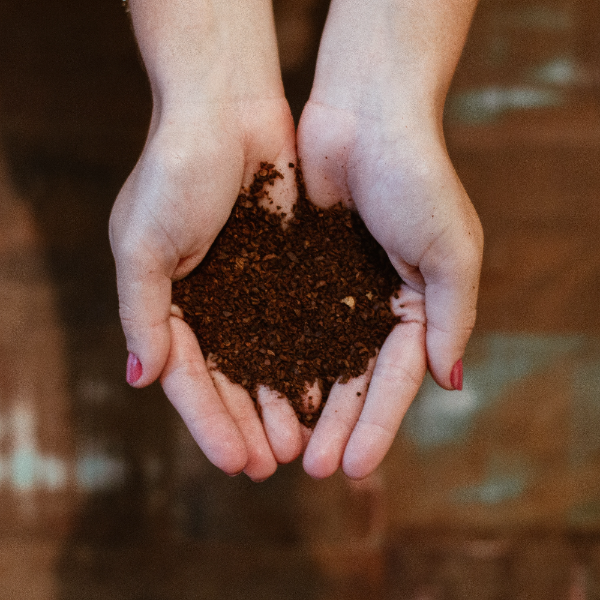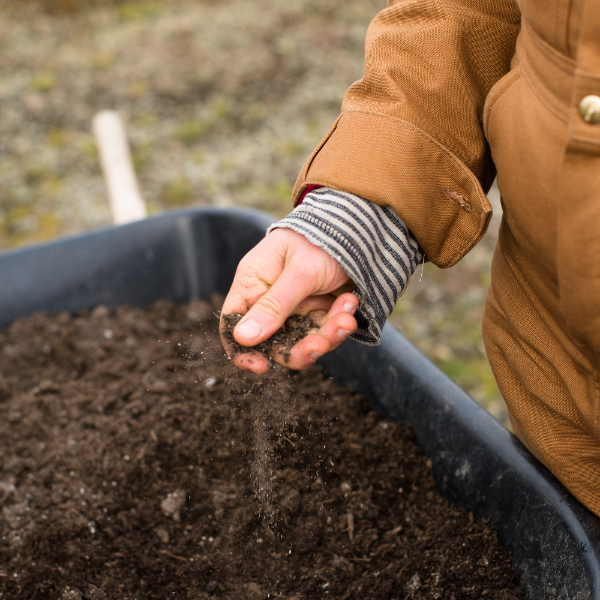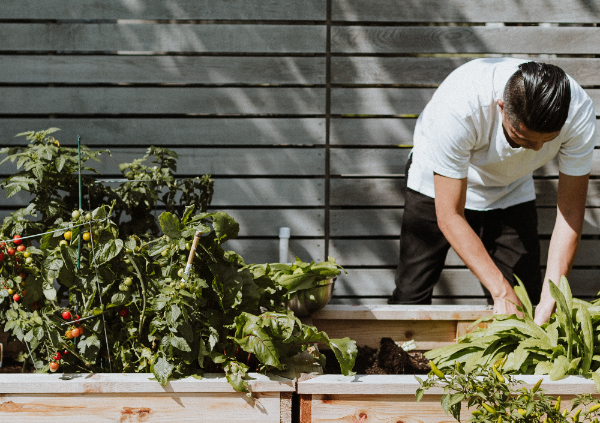How to Make Compost?
Composting is simply fascinating!
It’s a natural process with a rich history. Researchers have traced its origins back to 5000 BC when Scottish farmers planted their crops in rotting manure heaps, witnessing astonishing growth. Similarly, in China and India, farmers harnessed the power of manures and organics to nurture their soils, practices that still thrive today and have shaped modern composting and organic farming.
It offers us a remarkable opportunity to recycle organic waste and transform it into valuable, nutrient-rich soil. Whether we live in urban areas or serene countryside, composting is not only environmentally friendly but also a cost-effective way to nourish our gardens and reduce waste destined for landfills.
So let’s explore the process of creating compost and its benefits, and provide you with practical tips to get started.
First, what is the process of Composting?
Simply put, it is a biological process where microorganisms, such as bacteria and fungi, break down organic matter into simpler compounds. These microorganisms require a balance of carbon-rich (known as browns) and nitrogen-rich materials (known as greens) to thrive. Browns include dry leaves, straw, and paper, while greens consist of grass clippings, vegetable scraps, and coffee grounds.
What are the main benefits of composting?
It takes on a formidable role as a solution to a pressing environmental challenge by diverting organic waste from landfills and tackling the escalating issue of waste management head-on.
When organic waste decomposes in landfills, it releases methane, a potent greenhouse gas that fuels climate change. With composting, we can dramatically reduce the amount of organic waste sent to landfills, curbing methane emissions and taking a vital step towards a greener future.
The advantages of making compost extend far beyond waste reduction. It also nurtures our soils and empowers our gardens in myriad ways. By adding compost to the soil, we enhance its moisture retention capacity, ensuring our plants and veggies stay hydrated and resilient even during dry spells. Additionally, the rich organic matter in compost acts as a natural mulch, protecting the soil and enhancing its fertility.
It fosters biodiversity. As we enrich the soil with compost, we create an inviting habitat for beneficial organisms such as earthworms, insects, and microbes. These tiny yet mighty creatures work tirelessly beneath the surface, breaking down organic matter and enhancing nutrient cycling. The result? A thriving ecosystem in our very own garden, teeming with life and contributing to the health and resilience of our plants.
How to make compost and what’s a good technique for composting?
There are various methods to suit different needs and space availability, for example:
Garden Composting
Here’s a fun and popular approach for those lucky enough to have their own garden space. Let’s get composting!
Start by creating a compost pile or using a compost bin. Layer in a delightful mix of organic materials like kitchen scraps, garden waste, and dry leaves. Now, here’s where the magic happens! Give your compost pile a regular turn or mix to provide a burst of oxygen and help the decomposition process. Soon, you’ll have rich, nutrient-packed compost ready to nourish your plants and bring life to your garden.
Vermicomposting
Here’s an exciting option for all you urban gardeners or apartment dwellers with limited outdoor space.
Vermicomposting is like having a wriggly, wormy team of helpers in your home.
You need to set up a worm bin or vermicomposting system indoor or in a cozy spot and let introduce the stars of the show: the worms! They’re going to work their magic.
Feed them with kitchen scraps and provide some comfy bedding like shredded paper or coconut chips. Those hungry worms will munch away and transform all that organic goodness into supercharged worm castings—nature’s very own nutrient boost for your plants. It’s like a mini composting revolution happening right under your roof.
Trench Composting
It’s a fantastic technique for boosting soil fertility in specific areas and perfect for those with limited space.
Grab your trusty shovel and dig a trench in your garden bed. It’s like creating a secret hiding spot for organic treasures! Now, let’s fill that trench with a bounty of organic materials. Think kitchen scraps, garden waste, and any other compostable goodies you have on hand. It’s like burying a delicious feast for the soil! Cover it up with soil, like giving your compost a cozy blanket for a good night’s sleep. Over time, the magic begins- the organic matter breaks down, transforming into a nutrient-rich elixir that nourishes the soil and turns it into a thriving paradise for your plants.
Composting with Bokashi
Meet Bokashi Composting, the fermentation master!
It’s like a party for all types of organic waste – meat, dairy, cooked foods, you name it!
Grab an airtight container, sprinkle in some Bokashi bran (which you can easily find at your local gardening store), and start layering your waste. It’s like creating a tasty lasagna, but for compost! Let the magic happen for a few weeks as everything ferments. Once it’s ready, you can bury it in the soil or add it to a traditional compost pile.
Voila! Decomposition is complete, and your plants will be dancing with joy!
Tumble Time
Attention, compost superheroes! Meet tumbling bins, the ultimate composting party animals!
These bins are like the rockstars of enclosed composting systems, with their special rotating powers for mixing and aerating. Just toss in your organic materials, give them a spin on the dance floor regularly, and let the composting magic ignite!
It’s like a wild dance party that supercharges the decomposition process, giving you rich compost faster than you can say « groovy. »
Some composting wisdom: the Do’s and the Don’ts!

`
Do’s
Mix it up: Bring on the balance!
Include a groovy mix of browns (like dry leaves or shredded paper) and greens (like kitchen scraps or grass clippings) to keep things rockin’ in your compost pile. It’s all about creating the perfect harmony for decomposition.
Give your compost a little love by turning or mixing it regularly. It’s like being a compost DJ, providing the beats of oxygen to keep the breakdown process groovin’ along!
Moisture and Air
Keep your compost pile feeling moist and fresh, but not like a soggy swamp. Give it a drink now and then, especially during the dry season/summer, and cover it with a tarp or lid to lock in that moisture. And don’t forget the airtime! Give your compost pile a regular spin with a garden fork or compost turner. This way, oxygen gets to all those hardworking microorganisms, and decomposition gets turbocharged!
Time and patience!
Remember, the proces of making compost is like a slow dance, it takes time to work its magic. Be patient. It can take several months to a year for that compost to fully mature and become garden gold. Stay committed, give it some Tender Loving Care, and you’ll be rewarded with composting greatness.
With these tips, you’re on your way to becoming a composting champ. So let’s keep that pile moist, get the air flowing, and dance with time.
Don’ts
Keep It Cool
Avoid adding meat, dairy, or oily foods to your compost pile. They are like party crashers that can attract unwanted guests or make the compost go sour. Stick to the veggie and plant-based vibes for better results.
C:N ratio
When it comes to composting, the C:N ratio is like finding the perfect balance on the dance floor. C stands for carbon-rich « browns » like dry leaves or shredded paper, while N represents nitrogen-rich « greens » like kitchen scraps or grass clippings.
A C:N ratio of around 25-30:1 is the sweet spot for composting success.
In this ideal ratio, the carbon-rich materials provide structure and energy, while the nitrogen-rich materials supply nutrients and help break things down. It’s like having a dynamic dance partner duo that keeps the composting party rocking!
Here are some general guidelines for the quantity or proportion of browns (carbon-rich materials) and greens (nitrogen-rich materials):
Browns (Carbon): approx. 3 parts or 75% of the total compost mix.
For example: dry leaves, straw, shredded paper or cardboard, sawdust (from untreated wood), wood chips (smaller particle size), coffee filters…
Greens (Nitrogen): approximately 1 part or 25% of the total compost mix.
For example: fruit and vegetable scraps, grass clippings (fresh, not dried), plant trimmings and prunings, coffee grounds, tea leaves, seaweed (rinsed to remove excess salt)…
The specific composition may vary based on the materials you have available. It’s essential to experiment, adjust, and observe how your composting process progresses to achieve optimal results.
Composting Knowledge: Discover These « Did You Knows »!
- Nearly 30% of household waste can be composted. That’s right, instead of throwing it away, you can turn it into black gold for your plants.
- Composting microbes work their best between 57-71°C. That’s hotter than a dragon’s breath! Regularly mix or turn the pile to provide oxygen and help the microorganisms break down the materials.
- Organic composting reduces reliance on synthetic fertilizers. By using organic materials in composting, you can create a nutrient-rich soil amendment that provides essential nutrients to plants naturally. This reduces the need for synthetic fertilizers, which can have negative environmental impacts.
- Organic composting helps conserve water. Compost improves soil structure and increases its water-holding capacity. This means that plants grown in compost-amended soil require less watering, leading to water conservation and more efficient water usage in gardens and landscapes.
- Composting supports biodiversity. It encourages the growth of beneficial microorganisms, earthworms, and other beneficial soil organisms. These organisms contribute to the overall health and fertility of the soil, creating a thriving ecosystem underground.
- Composting can sequester carbon. Organic matter in compost has a high carbon content, and when it decomposes, carbon is stored in the soil. This process helps mitigate climate change by removing carbon dioxide from the atmosphere and storing it in the ground.
From Scraps to Soil Superheroes: Master the Art of Composting

`
Composting is a wonderful journey that transforms kitchen scraps, garden waste, and other organic materials into nutrient-rich soil amendments. By following the simple steps outlined in this article, you can turn your kitchen and garden waste into black gold for your plants. Be patient, and enjoy the process as you create a sustainable cycle of growth and nourishment.
Learn the Art of Nutrient-Rich Soil!
Learn more about the magic of decomposition and get expert tips in Our Online Workshop: « How to Make Compost » with facilitator Gavin Hardy.
Gavin is an esteemed educator and writer with 25 years of experience in permaculture, environmental design, and ecological sustainability, particularly in subtropical Australia. He will be your guide through the enchanting world of composting.
Don’t miss this opportunity to unlock the magic of turning waste into garden gold!



